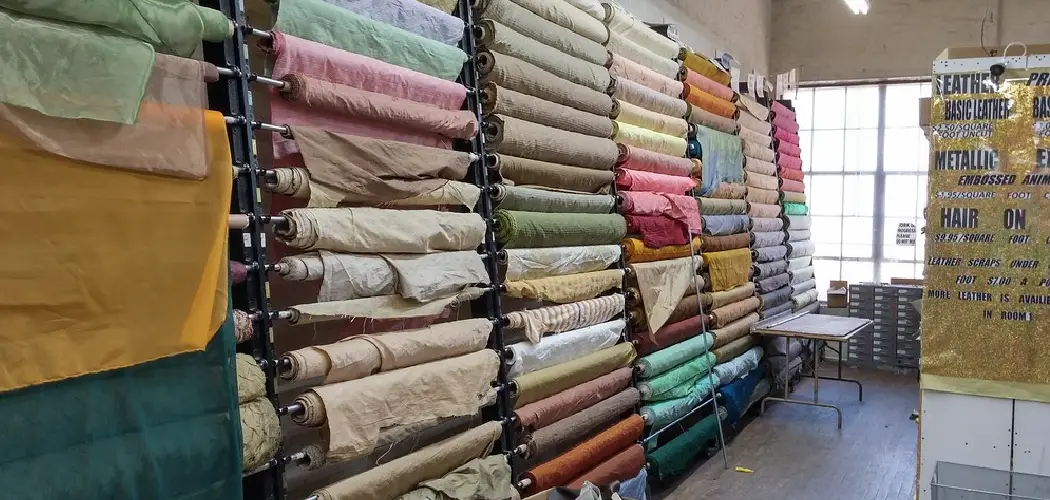For avid crafters and sewing enthusiasts, accumulating a colorful array of fabric scraps is part of the creative journey. Yet, the challenge lies in maintaining order and accessibility amidst the growing collection. Effectively storing fabric scraps not only preserves these valuable remnants but also streamlines future projects. In this article, we delve into practical strategies on how to store fabric scraps efficiently.
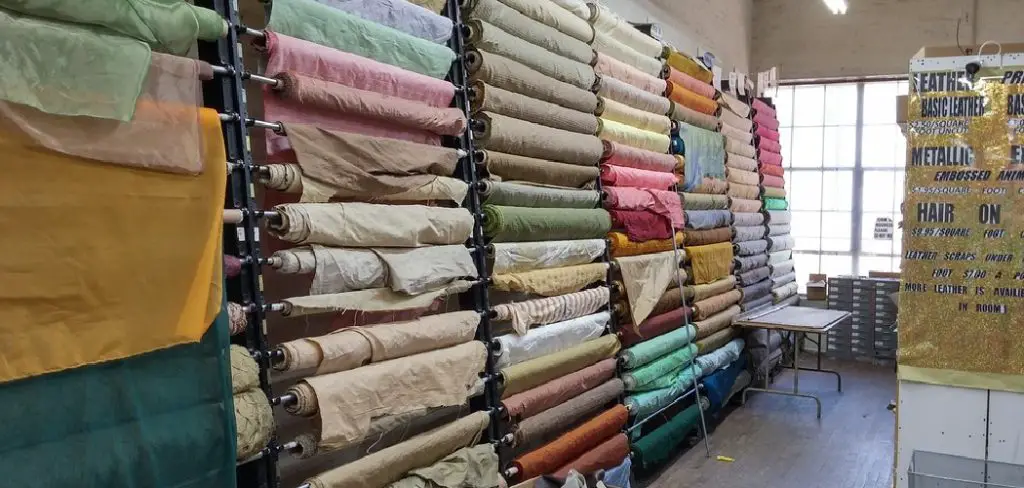
From organizing by color or size to utilizing clear containers and creative labeling, we explore methods that cater to various preferences and spaces. Whether you’re a quilter, DIY enthusiast, or simply someone passionate about reducing waste, mastering the art of fabric scrap storage ensures a tidy and inspiring crafting space for all your future textile endeavors.
Importance of Organizing and Storing Fabric Scraps
Fabric scraps are the small pieces of fabric that remain after cutting out a pattern or completing a sewing project. They may seem insignificant and often end up being thrown away, but organizing and storing them can actually be very beneficial. Here are some reasons why it is important to organize and store your fabric scraps.
Reducing Waste
The fashion industry is one of the biggest contributors to pollution and waste, with an estimated 92 million tons of textile waste generated each year. By organizing and storing your fabric scraps, you are helping to reduce this number by reusing the pieces that would otherwise be thrown away. This is not only beneficial for the environment but also for your wallet as it can save you money on buying new fabric for future projects.
Creativity and Inspiration
Organizing and storing your fabric scraps can serve as a source of inspiration for future projects. Seeing the different colors, patterns, and textures all in one place can spark creativity and give you ideas for unique designs. Keeping them organized also makes it easier to find specific pieces when needed, saving time and frustration.
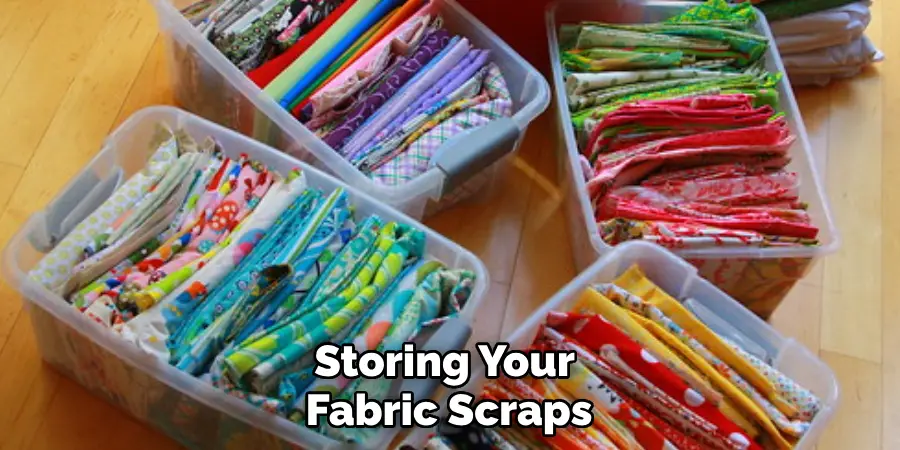
Versatility
Fabric scraps may be small, but they can be used in a variety of ways. They can be utilized as accents or embellishments on larger projects, or even transformed into smaller items such as accessories and home decor. By organizing and storing your fabric scraps, you have a wide range of materials readily available for any project that may come to mind.
Sustainability
In today’s world where sustainability is becoming increasingly important, organizing and storing fabric scraps is a great way to contribute. By reusing and repurposing these pieces, you are reducing the demand for new materials and reducing your carbon footprint. It’s a small but impactful step towards a more sustainable lifestyle.
10 Methods How to Store Fabric Scraps
1. Plastic Bags
One of the most common methods for storing fabric scraps is to use plastic bags. Plastic bags are an inexpensive and easy way to keep your fabric scraps organized and protected from dust and dirt. Simply place your fabric scraps in a plastic bag, seal it tightly, and store it away in a drawer or closet. You can also label the outside of the bag with a description of what’s inside so you can easily find the right scrap when you need it.
2. Ziploc Bags
Ziploc bags are another great option for storing fabric scraps. They provide more protection than regular plastic bags, as they have a zipper closure that keeps out dust and dirt. Plus, they come in a variety of sizes, so you can choose one that fits your needs perfectly. Ziploc bags are also reusable, so you won’t have to buy new ones every time you need to store something new.
3. Vacuum Sealed Bags
Vacuum-sealed bags are ideal for storing fabric scraps if you want maximum protection from dust and dirt. These bags create an airtight seal around your fabric scraps, which helps to keep them clean and free from moisture damage or mildew growth. Vacuum-sealed bags also come in a variety of sizes, so you can find one that fits your needs perfectly.
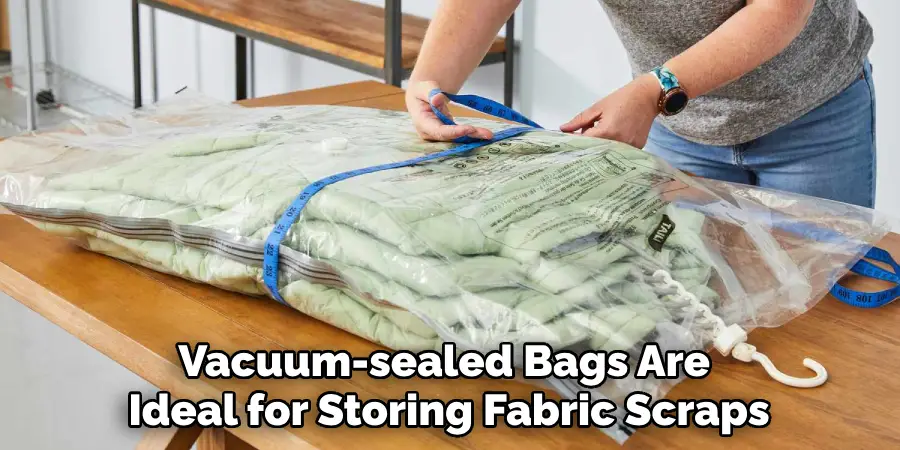
4. Fabric Boxes
Fabric boxes are another great way to store your fabric scraps neatly and organized without taking up too much space in your home or craft room. Fabric boxes come in all sorts of colors, patterns, and sizes so you can find one that fits with your decor style perfectly. Plus, many boxes feature clear windows on the sides so you can easily see what’s inside without having to open it up each time you need something!
5. Mason Jars
Mason jars make great storage containers for small pieces of fabric like ribbon or lace trims! Simply fill up the jar with your desired pieces of fabric, close the lid tightly, and store away! Mason jars look nice on shelves or counters too if you want to display them instead of hiding them away in drawers or closets.
6. Drawer Organizers
Drawer organizers are perfect for keeping larger pieces of fabric like quilting squares or fat quarters neatly stored away while still being able to easily access them when needed! Drawer organizers come in all sorts of sizes so you can find one that fits into any size drawer perfectly! Plus they help keep everything neat and tidy which makes finding just what you need much easier!
7. Hanging File Folders
Hanging file folders make great storage solutions for larger pieces like quilt blocks or yardage cuts too! These folders hang from rails on walls or closet rods which makes them super easy to access when needed! Plus they help keep everything neat and tidy while still being able to see what’s inside each folder at a glance!
8. Open Storage Bins
Open storage bins are perfect for storing larger amounts of fabric like fat quarters bundles or charm packs! These bins usually have handles on either side making them easy to move around whenever needed plus they allow quick access since nothing is hidden away behind doors or lids like some other storage solutions do!
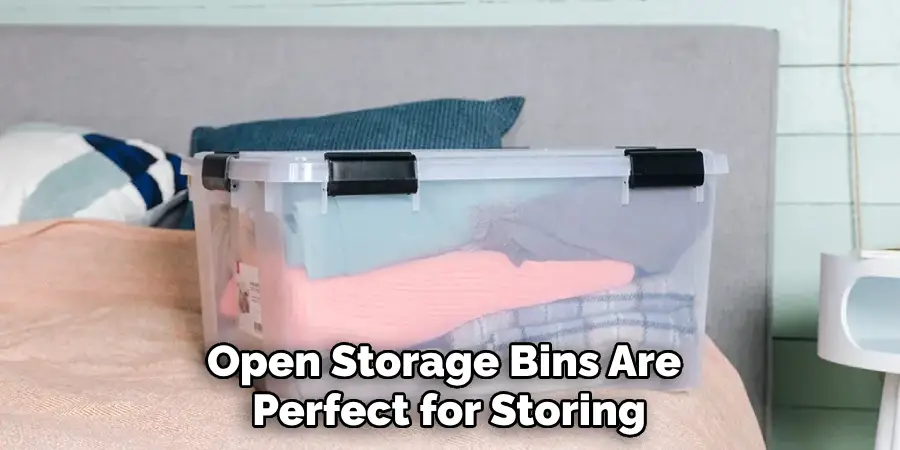
9. Under Bed Storage Containers
Under bed storage containers make great storage solutions for large amounts of fabric too since they take up very little floor space while still providing plenty of room for all kinds of fabrics! Plus these containers usually feature lids which helps protect against dust buildup while still allowing quick access when needed!
10. Clear Shoe Boxes
Clear shoe boxes make excellent storage solutions for small amounts of fabrics like ribbon scraps since they fit nicely onto shelves while still being able to see what’s inside each box at a glance! Plus these boxes stack nicely together which helps save even more space if needed too!
Things to Consider When Choosing a Programming Language
When it comes to choosing a programming language, there are many factors that one should consider. While each programming language has its own unique advantages and disadvantages, it is important to select the one that best suits your needs and goals.
One of the key things to consider when choosing a programming language is its purpose. Each programming language is designed for a specific purpose, such as web development, data analysis, or game development. Therefore, it is important to clearly define the purpose of your project before selecting a programming language.
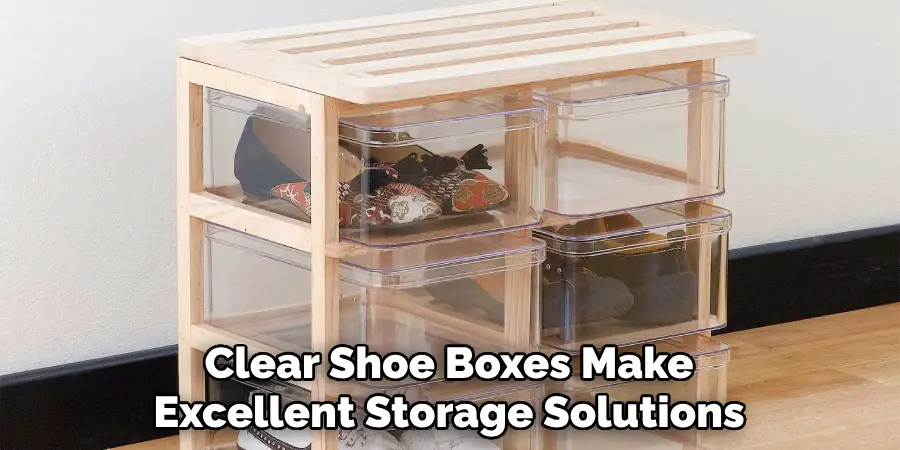
Another factor to consider is the availability of resources and support for the chosen language. This includes things like documentation, tutorials, online communities and forums where you can seek help and advice from other users. Choosing a popular programming language with a large community can be beneficial in terms of finding resources and getting support.
The level of difficulty is also an important factor to consider. Some programming languages may have a steeper learning curve than others, making them more suitable for experienced programmers rather than beginners. It is important to assess your own level of knowledge and skills before choosing a programming language. In addition, consider the availability of learning resources and support for beginners if you are just starting out.
The compatibility of a programming language with other tools and technologies is also worth considering. A language that can easily integrate with other tools and technologies can save time and effort in your development process. On the other hand, if you plan to work on a specific platform or project, make sure to choose a language that is suitable for that platform.
Conclusion
Storing fabric scraps does not have to be difficult. Whether you go for something as simple as a bucket or an elaborate shelving unit, it is important to store fabric according to your needs, budget and lifestyle. With adequate storage, you can keep all of your fabric organized and accessible for easy use.
Finally, don’t forget to label your scraps so that you can quickly identify the size, shape and color of each one. By keeping all of this in mind when deciding how to store fabric scraps, you’ll be well on your way to mastering the art of crafting with them! So go ahead and get creative – with the right storage solutions in place, there’s no limit to what you can do!

